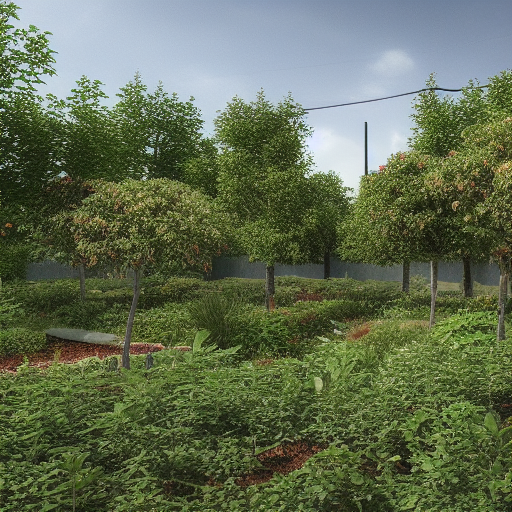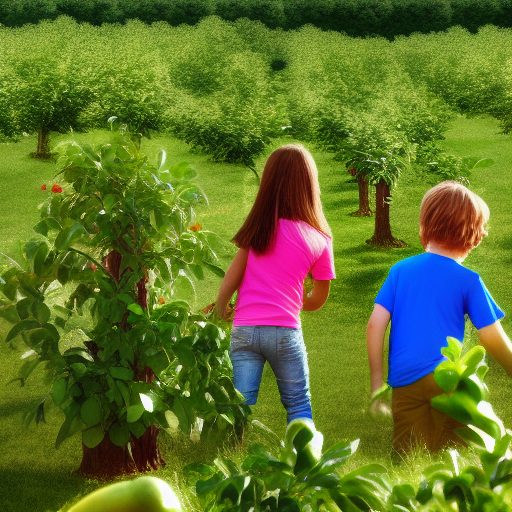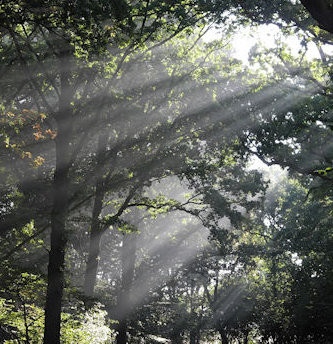Written by Don Richardson

A New Way to Grow Your Own Food

Imagine a forest filled with food. Trees laden with ripe fruits, bushes overflowing with fresh berries, and delicate herbs carpeting the ground between them. This might sound like something from a fairytale, but it's actually a reality. Welcome to the world of food forests.
Food forests are a type of permaculture garden that mimics the structure of a natural forest ecosystem. In a food forest, fruit and nut trees are planted alongside shrubs, herbs, and other edible plants. This creates an environment where each plant can support and nurture the others, leading to increased yields and healthier plants overall.
Why Grow a Food Forest?
There are many reasons why you might want to consider growing a food forest. For one thing, food forests are incredibly efficient. Because they mimic the structure of a natural forest, they require very little maintenance or input once they are established. And because they are so diverse, food forests can provide you with a never-ending supply of fresh fruits, vegetables, and herbs - all without having to ever purchase them from the grocery store again.
In addition to being efficient, food forests are also good for the environment. By mimicking the structure of a natural ecosystem, food forests help to restore balance to ecosystems that have been disrupted by monoculture agriculture. They also help to promote biodiversity and combat climate change.
Finally, food forests are just plain beautiful. They are living landscapes that provide you with both aesthetic pleasure and practical benefits - what could be better than that?

User's Guide to Growing Your Own Food Forest
If you're interested in growing your own food forest, there are a few things you should keep in mind. First of all, make sure to choose a location that gets at least six hours of sunlight per day - fruit trees especially need lots of sun in order to produce bountiful harvests. Many other plants need less sun or even mostly shade. Secondly, make sure to choose plants that will do well in your climate zone - this will ensure that your plants are able to thrive without needing extra care or attention. And lastly, have patience! Growing a food forest takes time - usually three to five years - but it is so worth it in the end. Seeing your hard work pay off as you harvest delicious fruits and vegetables from your very own backyard is an experience you'll never forget. So what are you waiting for? Get started on your food forest today! As they say, “The best time to grow a food forest was 20 years ago. The next best time is today.”
Do lots of research and come up with a plan. You do not have to do everything that you may see on YouTube, I don’t. For instance some people on the videos I have watched say to make a hole twice as wide & twice as deep, put this and that in the hole to provide such and such for the plant, cover with dirt and add these things to the top and then cover with mulch. I basically create a small mound, dig the hole as suggested, put the plant in the whole cover it with dirt and then mulch and water it in, that’s it, done. I have not added anything extra, and my plants are doing just fine without spending the extra money. Instead of fertilizer, plant companion plants so they can take care of each other, use mulch, and do chop and drop methods to provide nourishment to your plants. This is where research comes in on what plants to plant and how to create a natural eco system.
What are you waiting for?
If you are interested in growing your own food, but you don’t want to put in a lot of work, then you should consider creating a food forest. Once a Food Forests is established, they are very easy to maintain, and they can provide you with an abundance of fresh fruits, vegetables, nuts, and berries. Plus, they are absolutely beautiful! and can provide habitat for wildlife.










0 Comments